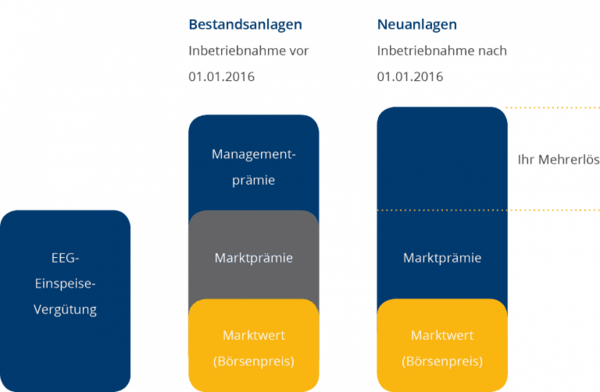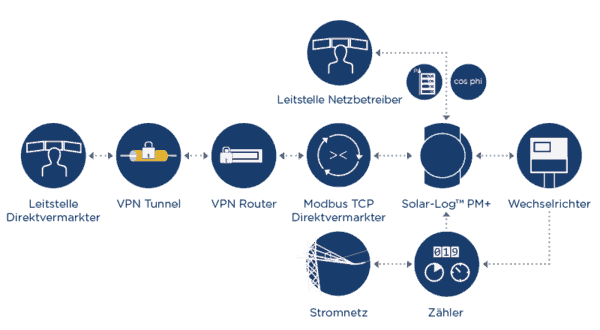Direct Marketing of PV Electricity without Detours
by Maria Beck, Varta Storage GmbH | 07.08.2019

Anyone who is or wants to become a power generator must think about what he wants to do with the electricity. There are various ways to do this. In addition to pure feed-in and self-consumption, a third option is increasingly coming to the foreground: direct marketing. In other words, the sale of PV electricity on the electricity exchange. Sounds abstract, but it is becoming increasingly popular, and players in the PV market are working to make this option easier - because the clock is ticking.
Direct marketing is the model of the future?
This sounds like a bold thesis, but it's not unrealistic if you look at the current situation. In 2000, the first plants received a feed-in tariff limited to 20 years. This means that from 2021, the first plant owners will have to consider how they will continue to use their electricity. Since 2016, all new PV systems with a capacity of 100 kWp or more have had to participate in direct marketing. This shows that to date, the focus has been on systems over 100 kWp and that smaller systems are still having a hard time. However, this is changing visibly. There are more and more opportunities for smaller plants to find a worthwhile entry into direct marketing.
Advantages of Direct Marketing of PV Electricity
One advantage is quite clear: direct marketing is a supplement to own power consumption. Especially for new plants with a low feed-in tariff, direct marketing can pay off. Somewhat more abstract is the function that direct marketers perform in the PV market. They contribute to an increase in competitiveness among alternative energies. This is because, thanks to direct marketing, decentralized electricity can once again be controlled centrally. This then allows forecasts to be made, which in turn contribute to grid stability, among other things.
What does the remuneration look like?
The direct marketing partner markets the plant operator's generated electricity and pays him the average electricity price achieved on the stock exchange (so-called "market value") on a monthly basis. Market premium and market value together result in the value to be invested. This value is defined in the EEG and guarantees the plant operator a fixed payment over 20 calendar years. The market premium always compensates for the difference between the monthly fluctuating market value and the legally guaranteed fixed value to be invested and is paid by the grid operator.

How does the marketing of PV electricity work to date?
Until now, the path to direct marketing has been very complex. A total of five parties had to interact in the process. These consisted of the direct marketer, the direct marketer's service providers, a solution supplier for connection, the installer, and of course the operator. The connection was challenging because each PV plant has different requirements that demanded different solutions. In addition, data backup must be ensured when controlling the plant. This control is carried out by two different players - on the one hand by the grid operator and on the other hand by the direct marketer. Each individual control of the plant must be logged. Finally, there is the administrative work involved in registering the plant for direct marketing.
The aim here was to bundle the processes and simplify them for the plant operator. Only then will direct marketing also become attractive for smaller plants.
New Ways to Direct Marketing
Such a simple solution is offered by Solar-Log GmbH with its partner Virtual power plant of EnBW offers. The new solution for fast and cost-effective participation in direct marketing is based on two components.
- The Solar-Log™ energy management system provides a technical solution.
- EnBW's virtual power plant handles the registration and subsequent marketing of PV electricity.
The Solar-Log™ Base provides all the technical requirements and is, so to speak, the energy manager: it delivers the information from the PV plant to the direct marketer and ensures that the plant can be controlled by the latter. The VPN function required for data transmission is already integrated in the new energy manager. This eliminates additional costs.

The virtual power plant of EnBW takes over the simplification of the administrative effort. Through the Revenue calculator, it is easy to determine the financial compensation that can be achieved by directly marketing one's own PV electricity. The application can then be submitted online and direct marketing can begin.

Solar-Log™ vereinfacht die Direktvermarktung
Do you want to play the Youtube video?
Yes
No
Configure cookies
Back to the overview




